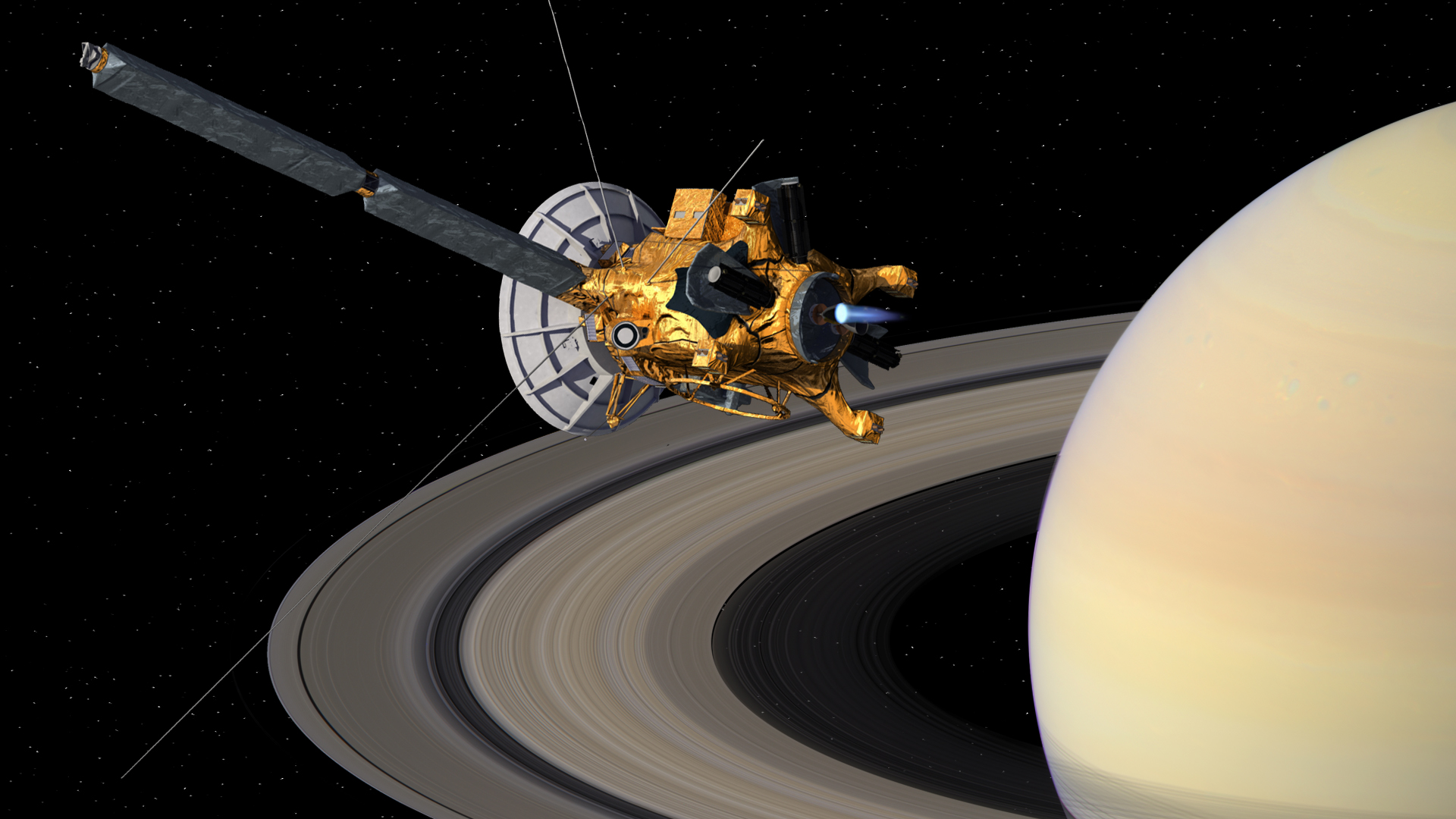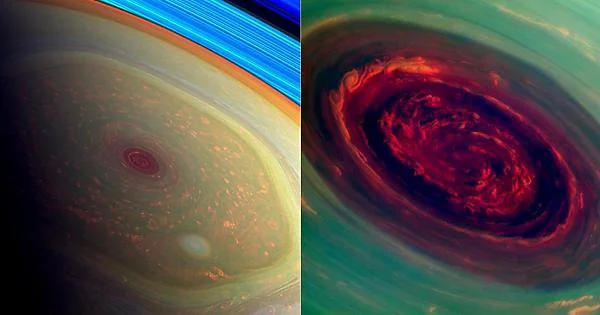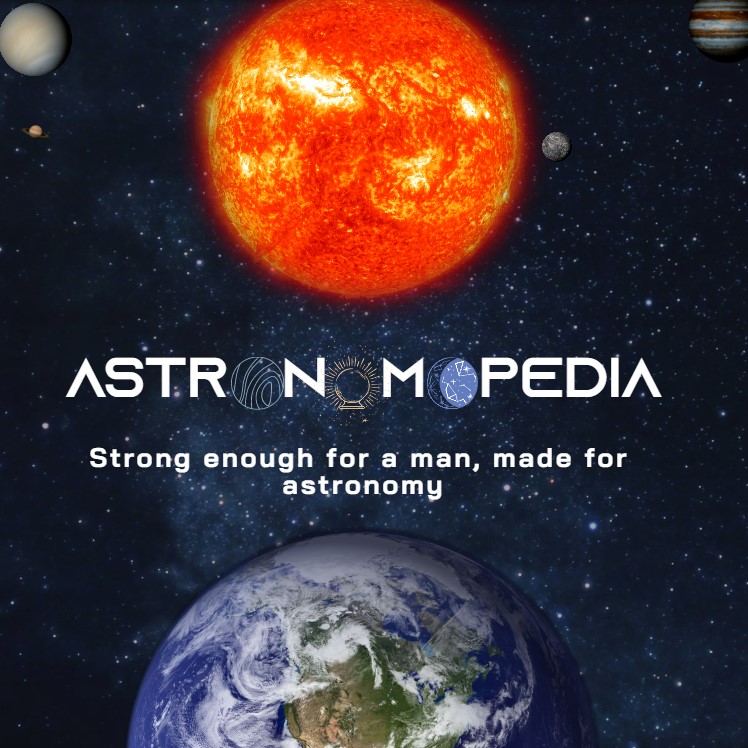

Cassini-Huygens

What is the Cassini-Huygens?
NASA, the European Space Agency (ESA), and the Italian Space Agency (ASI) collaborated on the Cassini space research mission by deploying a space probe (Cassini-Huygens) to study Saturn and its system, including its rings and natural satellites. The Flagship-class robotic spacecraft comprised both NASA's Cassini space probe and ESA's Huygens lander, which landed on Saturn's largest moon, Titan. The names of the two spacecraft are derived from the astronomers Christiaan Huygens and Giovanni Cassini.
What is special about this telescope?
Cassini-Huygens was a first-of-its-kind mission. The first probe to orbit Saturn. The first landing in the solar system's outer reaches. The first to sample an extraterrestrial ocean.
Technical Specifications
Dimensions
The Cassini-Huygens spacecraft was an impressive interplanetary mission. The Cassini orbiter, the main component of the mission, weighed approximately 2,125 kg (4,685 pounds) and had a length of 6.7 meters (22 feet) and a width of 4 meters (13 feet). Additionally, the Huygens Probe, which was part of the Cassini-Huygens mission, had its own distinct dimensions. Including the height of the Cassini orbiter and the dimensions of the Huygens Probe, the spacecraft's complete dimensions can be understood as 6.7 meters high and more than 4 meters wide with a weight of 5.6 tonnes.
Physico-chemical properties
No informations yet.

Wavelength
Cassini could study the Saturn's system at wavelengths ranging from 55.8 to 5100 nanometres (A typical atom is anywhere from 0.1 to 0.5 nanometers in diameter).
This false-color image (at the right) from NASA's Cassini probe depicts "The Rose", the whirling vortex of Saturn's north polar storm that resembles a deep red rose of enormous proportions surrounded by green foliage. The eye was measured to be a startling 2,000 kilometres (1,250 miles) across, with cloud speeds reaching 531 kilometres per hour (330 mph).
Anatomy
The Cassini spacecraft was equipped with a variety of instruments, each serving a specific scientific purpose. These instruments included a synthetic aperture radar mapper, a charge-coupled device imaging system, a visible/infrared mapping spectrometer, a composite infrared spectrometer, a cosmic dust analyzer, a radio and plasma wave experiment, a plasma spectrometer, an ultraviolet imaging spectrograph, a magnetometer, and an ion/neutral mass spectrometer. Telemetry from the communications antenna and other transmitters, such as the S-band transmitter and dual-frequency Ka band system, was utilized to study the atmospheres of Titan and Saturn, as well as to measure the gravity fields of the planet and its satellites.

Optics
The Cassini-Huygens mission boasted an impressive array of instruments and cameras, with 12 instruments on the Cassini orbiter and six instruments on the Huygens probe. These optical instruments and cameras were meticulously designed to capture accurate measurements and detailed images, adapting to various atmospheric conditions and light spectra encountered during the mission. For example, the Descent Imager/Spectral Radiometer (DISR) was an optical instrument specifically engineered to make solar wavelength measurements aboard the Huygens Probe as part of the Cassini mission. Alongside the DISR, additional optical instruments and cameras were present on both the Cassini orbiter and the Huygens probe, contributing to the spacecraft's comprehensive optical capabilities.
Resolution
The Cassini-Huygens spacecraft carried a range of powerful instruments and cameras that facilitated accurate measurements and captured detailed images, enabling the observation of fine details and features within the solar system. While specific details about the resolution of individual instruments may vary, the comprehensive imaging capabilities of the spacecraft provided high-resolution data and imagery. Additionally, the spacecraft utilized a high-gain antenna and two low-gain antennas for reliable data transmission and reception, ensuring the successful acquisition of scientific information.
Spectral Range
The Cassini-Huygens mission encompassed a diverse set of instruments, enabling observations across a wide range of wavelengths, from ultraviolet to infrared. Notably, the Visible and Infrared Mapping Spectrometer (VIMS) was optimized for capturing data in the visible and infrared spectral ranges. Alongside the VIMS, other instruments aboard the spacecraft were designed to target different spectral regions, facilitating comprehensive scientific investigations. The combined spectral range covered by the Cassini-Huygens instruments allowed for the study of various phenomena and the collection of valuable data across a wide range of wavelengths.
Instruments
The Cassini-Huygens spacecraft was equipped with a diverse set of instruments, enabling observations across a broad range of wavelengths, ranging from ultraviolet to infrared. The Visible and Infrared Mapping Spectrometer (VIMS) was among the key instruments, specifically optimized for capturing data in the visible and infrared spectral ranges. Additionally, the spacecraft housed several other instruments, each targeting different spectral regions and contributing to valuable scientific investigations. These instruments included the Composite Infrared Spectrometer (CIRS), facilitating the study of thermal emissions and atmospheric composition, the Imaging Science Subsystem (ISS), providing high-resolution imaging capabilities, the Ultraviolet Imaging Spectrograph (UVIS), designed for ultraviolet observations, and the Radio and Plasma Wave Science (RPWS) instrument, devoted to studying plasma and radio emissions in the space environment. The collective capabilities of these instruments enabled comprehensive scientific exploration of the Saturn system and its moons, facilitating the acquisition of valuable data across a wide range of wavelengths.
Sensitivity
The specific sensitivity details of the instruments or detectors aboard the Cassini-Huygens spacecraft have not been publicly documented or are not readily available. The sensitivity characteristics of these instruments may vary and can be specific to their respective observational purposes within the mission.
Motion
Location
The Cassini-Huygens spacecraft conducted its scientific investigations within the Saturnian system, situated in the depths of space approximately 1.2 billion kilometers (746 million miles) away from Earth. This strategic positioning allowed for close proximity observations and measurements of Saturn, its captivating rings, and its diverse moons. From this vantage point, the spacecraft captured detailed data on Saturn's atmospheric dynamics, the intricate structures within its magnificent rings, and the intriguing geological features exhibited by its diverse family of moons.

Orbit
After an arduous seven-year journey, the Cassini-Huygens spacecraft achieved a momentous milestone on July 1, 2004, successfully entering orbit around Saturn. This achievement was realized through a meticulously executed orbital insertion maneuver, navigating the spacecraft through the narrow passage between Saturn's F and G rings. Following this precise insertion, the spacecraft commenced a series of orbits around Saturn, embarking on an extraordinary expedition to explore and conduct scientific observations of the planet, its mesmerizing rings, and its captivating moons. As depicted in the accompanying moving image, the purple dot symbolizes the Cassini spacecraft, while the dark blue dot represents Earth, the red dot signifies Mars, and the green dot depicts Saturn, illustrating the relative positions of these celestial bodies during the Cassini-Huygens mission. This captivating visual depiction serves as a testament to the spacecraft's dedicated orbit around the magnificent ringed planet.
Space Telescope Programs
Launch and decommissioning
The Cassini-Huygens probe set out on its nearly seven-year voyage to the Saturn system on October 15, 1997. In transit, Cassini-Huygens passes Venus (twice), Earth, and Jupiter before arriving at the Saturn system in 2004.
At the end of the mission, Cassini plunged into the planet's atmosphere while continuing to broadcast science data as long as its tiny thrusters could maintain the spacecraft's antenna aimed at Earth. Soon later, Cassini burned up and disintegrated like a meteor. Cassini had to be crashed into Saturn to preserve the pristine environments of Enceladus and Titan, as they have the potential to support life.
Its missions
The Cassini-Huygens mission was a comprehensive scientific endeavor with a wide range of objectives focused on exploring different aspects of the Saturnian system. It aimed to conduct a detailed study of Saturn's iconic rings, unravel the mysteries surrounding its intriguing moons, and investigate the dynamics and composition of the planet's magnetosphere. Through these missions, the spacecraft expanded our knowledge of Saturn, its rings, moons, and magnetosphere, enhancing our understanding of planetary systems within and beyond our solar system.
Data and Observations
Equipped with advanced scientific instruments, the Cassini-Huygens spacecraft captured extensive data in the form of images, spectra, and time-series measurements. These observations provided valuable insights into the characteristics, composition, and dynamics of Saturn's majestic rings, the geological features of its captivating moons, and the intricate interactions within Saturn's magnetosphere. The release of the Huygens probe allowed for unprecedented exploration of Saturn's moon, Titan, providing invaluable data on its atmosphere and surface characteristics. The mission's success was further bolstered by ground-based observations of Titan, which contributed to the meticulous preparations for the Huygens probe mission.
Partnerships and Collaborations
The Cassini-Huygens mission was a remarkable collaboration between NASA, ESA, and ASI, uniting the expertise and resources of seventeen nations. NASA's Jet Propulsion Laboratory managed the construction and operation of the Cassini orbiter, while ESA developed the Huygens probe. Approximately 260 scientists from seventeen countries joined forces, working together to deepen our understanding of Saturn's system. Additionally, the mission fostered collaboration with NASA's Galileo spacecraft during its swing-by of Jupiter, expanding scientific investigations beyond Saturn to the Jovian system.
Upgrades and Extensions
After completing its extended Cassini Equinox Mission, the Cassini-Huygens spacecraft embarked on the Cassini Solstice Mission. This extension provided groundbreaking observations of a complete seasonal cycle for Saturn and its moons. It enabled additional revolutions around Saturn, including flybys of Titan and Enceladus, unveiling new discoveries and expanding our knowledge of the intricate dynamics within the Saturnian system. The mission concluded with a daring maneuver, as Cassini plunged into Saturn's atmosphere, transmitting crucial scientific data until the end. This courageous act marked the poignant finale of the mission, leaving a profound legacy in our exploration of Saturn and inspiring future missions in the exploration of our solar system.
Author: William Homier
Editor: William Homier
Video credit goes to NASASolarSystem.
This page was last edited on 12 July 2022, at 13:50 (HAE).
Sources:

